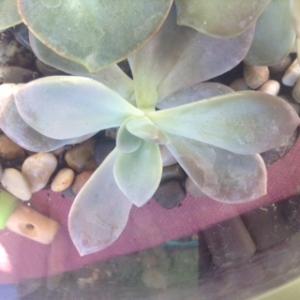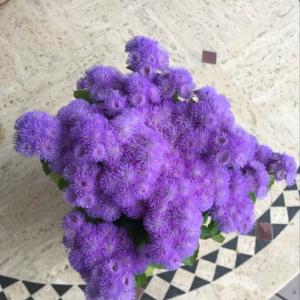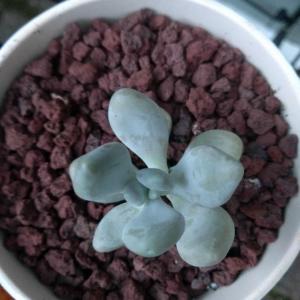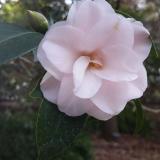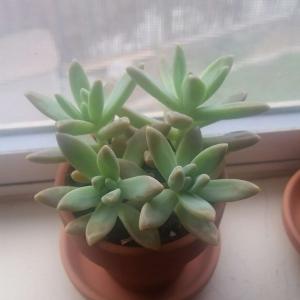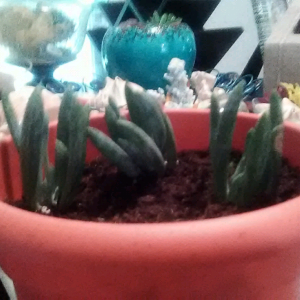成长记
Myah Lerch
2017年06月03日

I new added a "Pachyveria glauca hybrid "Blue Quartz"" in my "garden"


2
0
文章
Micky
2017年05月22日

Planting blue spruce tree is rewarding, it is an attractive native American conifer, read below to know more about blue spruce care and growing.
Colorado Blue Spruce (Picea pungens) is an attractive native American conifer. This extremely rustic silvery blue tree reaches height of 9 – 21 m (30-70 ft) in its region of origin. Beautiful bluish green color, accentuated by the sharply pointed foliage makes it a perfect conifer for open landscapes and large backyards. Dwarf forms of blue spruce are also available that reaches only between 1.5 to 4.5 m (5-15 ft) tall and are suitable for small gardens, patios and terrace.
Colorado blue spruce is a pyramidal conifer that grows slowly. Its persistent and fragrant needle like bluish green foliage are densely distributed around the reddish gray twigs. These needles are stiff and sharp.
USDA Hardiness Zones — 3 – 8
Difficulty — Easy
Other Names — Blue spruce, Green spruce, White spruce, Colorado spruce or Colorado blue spruce and Picea pungens.
Propagation and Planting Blue Spruce
Blue spruce is propagated usually from cuttings, grafting and seeds. Blue spruce cuttings are collected, preferably in the morning from vigorous branches. These cuttings should be dipped in rooting hormone before planting in containers in a mixture of peat and sand. After planting keep the cuttings on a bright spot and keep the substrate moist. Blue cuttings take a long time to show signs of growth and you must wait several months and the success rate is also poor. once the cuttings shows growth, plant them in right place. Air layering of blue spruce tree is also possible.
Only mature blue spruce trees produce the crop of corns, after the plant reaches the age of 20. These cones drop their seeds in spring. Blue spruce seeds requires a large period of light to germinate: 14 to 16 hours per day. If the length of light falls below 12 hours a day, they become dormant.Seedling Growth of blue spruce is also very slow and you need to be patient.
If you are planting blue spruce tree, our recommendation is to buy a plant from nursery so that you’ll not have to wait that much long.
Position
Planting blue spruce tree on a location in moist soil with full sun to light shade is optimal. However, blue spruce trees can tolerate less than perfect conditions but growing them in a heavily polluted area can affect the blue color coating of the needles.
Blue Spruce Care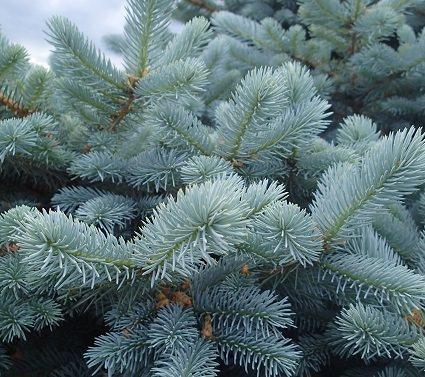
Blue spruce tree care involves a few requirements and slight maintenance to keep it healthy and vigorous.
Soil
Soil should be well drained and rich in organic matter. You can add compost while planting. It is also required to keep the soil slightly moist when plant is young as mature trees can tolerate dry soil.
Fertilizer
Conifer fertilizer is expensive (like 30-15-15 with minor elements) but very effective especially if your soil is sandy. These fertilizers will give all the nutrients and help the tree growing vigorously with a nice look and much denser foliage.
Water
Regular watering is required for young plant. Once established watering must be abundant but infrequent only during the dry spells. All conifers require significant water supply in the fall before frost to accumulate reserves, this will allow them to withstand the sun’s rays in March when plants still have their feet in the gel, causing called spring burn.
Weeds
Planting area around the blue should be kept clean and weed free, especially when plant is not well established. A good thick cedar mulch or of other organic matter is sufficient to prevent annual weeds.
Pruning
Do not prune these trees. They do best when their branches are allowed to grow all the way to the ground.
Pests and Diseases

Colorado Blue Spruce (Picea pungens) is an attractive native American conifer. This extremely rustic silvery blue tree reaches height of 9 – 21 m (30-70 ft) in its region of origin. Beautiful bluish green color, accentuated by the sharply pointed foliage makes it a perfect conifer for open landscapes and large backyards. Dwarf forms of blue spruce are also available that reaches only between 1.5 to 4.5 m (5-15 ft) tall and are suitable for small gardens, patios and terrace.
Colorado blue spruce is a pyramidal conifer that grows slowly. Its persistent and fragrant needle like bluish green foliage are densely distributed around the reddish gray twigs. These needles are stiff and sharp.
USDA Hardiness Zones — 3 – 8
Difficulty — Easy
Other Names — Blue spruce, Green spruce, White spruce, Colorado spruce or Colorado blue spruce and Picea pungens.
Propagation and Planting Blue Spruce
Blue spruce is propagated usually from cuttings, grafting and seeds. Blue spruce cuttings are collected, preferably in the morning from vigorous branches. These cuttings should be dipped in rooting hormone before planting in containers in a mixture of peat and sand. After planting keep the cuttings on a bright spot and keep the substrate moist. Blue cuttings take a long time to show signs of growth and you must wait several months and the success rate is also poor. once the cuttings shows growth, plant them in right place. Air layering of blue spruce tree is also possible.
Only mature blue spruce trees produce the crop of corns, after the plant reaches the age of 20. These cones drop their seeds in spring. Blue spruce seeds requires a large period of light to germinate: 14 to 16 hours per day. If the length of light falls below 12 hours a day, they become dormant.Seedling Growth of blue spruce is also very slow and you need to be patient.
If you are planting blue spruce tree, our recommendation is to buy a plant from nursery so that you’ll not have to wait that much long.
Position
Planting blue spruce tree on a location in moist soil with full sun to light shade is optimal. However, blue spruce trees can tolerate less than perfect conditions but growing them in a heavily polluted area can affect the blue color coating of the needles.
Blue Spruce Care

Blue spruce tree care involves a few requirements and slight maintenance to keep it healthy and vigorous.
Soil
Soil should be well drained and rich in organic matter. You can add compost while planting. It is also required to keep the soil slightly moist when plant is young as mature trees can tolerate dry soil.
Fertilizer
Conifer fertilizer is expensive (like 30-15-15 with minor elements) but very effective especially if your soil is sandy. These fertilizers will give all the nutrients and help the tree growing vigorously with a nice look and much denser foliage.
Water
Regular watering is required for young plant. Once established watering must be abundant but infrequent only during the dry spells. All conifers require significant water supply in the fall before frost to accumulate reserves, this will allow them to withstand the sun’s rays in March when plants still have their feet in the gel, causing called spring burn.
Weeds
Planting area around the blue should be kept clean and weed free, especially when plant is not well established. A good thick cedar mulch or of other organic matter is sufficient to prevent annual weeds.
Pruning
Do not prune these trees. They do best when their branches are allowed to grow all the way to the ground.
Pests and Diseases
0
0
成长记
doctronix702
2017年05月17日
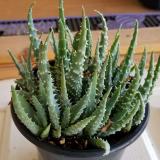
I new added a "Blue Chalk Sticks (Senecio Mandraliscae)" in my "garden"


3
0



